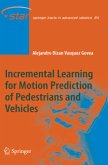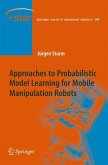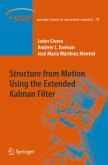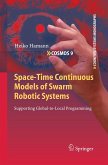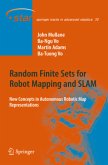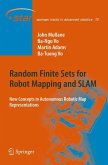This book focuses on the problem of moving in a cluttered environment with pedestrians and vehicles. A framework based on Hidden Markov models is developed to learn typical motion patterns which can be used to predict motion on the basis of sensor data.
Modeling and predicting human and vehicle motion is an active research domain.Owing to the difficulty in modeling the various factors that determine motion(e.g. internal state, perception) this is often tackled by applying machinelearning techniques to build a statistical model, using as input a collectionof trajectories gathered through a sensor (e.g. camera, laser scanner), and thenusing that model to predict further motion. Unfortunately, most currenttechniques use offline learning algorithms, meaning that they are not able tolearn new motion patterns once the learning stage has finished.
This books presents a lifelong learning approach where motion patterns can belearned incrementally, and in parallel with prediction. The approach is based ona novel extension to hidden Markov models, and the main contribution presentedin this book, called growing hidden Markov models, which gives us the ability tolearn incrementally both the parameters and the structure of the model. Theproposed approach has been extensively validated with synthetic and realtrajectory data. In our experiments our approach consistently learned motionmodels that were more compact and accurate than those produced by two otherstate-of-the-art techniques, confirming the viability of lifelong learningapproaches to build human behavior models.
Hinweis: Dieser Artikel kann nur an eine deutsche Lieferadresse ausgeliefert werden.
Modeling and predicting human and vehicle motion is an active research domain.Owing to the difficulty in modeling the various factors that determine motion(e.g. internal state, perception) this is often tackled by applying machinelearning techniques to build a statistical model, using as input a collectionof trajectories gathered through a sensor (e.g. camera, laser scanner), and thenusing that model to predict further motion. Unfortunately, most currenttechniques use offline learning algorithms, meaning that they are not able tolearn new motion patterns once the learning stage has finished.
This books presents a lifelong learning approach where motion patterns can belearned incrementally, and in parallel with prediction. The approach is based ona novel extension to hidden Markov models, and the main contribution presentedin this book, called growing hidden Markov models, which gives us the ability tolearn incrementally both the parameters and the structure of the model. Theproposed approach has been extensively validated with synthetic and realtrajectory data. In our experiments our approach consistently learned motionmodels that were more compact and accurate than those produced by two otherstate-of-the-art techniques, confirming the viability of lifelong learningapproaches to build human behavior models.
Hinweis: Dieser Artikel kann nur an eine deutsche Lieferadresse ausgeliefert werden.


